Flores, Y.
16/10/2019
Greetings, dear readers! lovers of nature and ecological tourism.
Promoting harmonious ecological and environmental practices, today I have the pleasure of sharing primary information, voice of specialized guides and people with admirable historical wealth that I complemented with a valuable documentary review on the Dolmen of Poulnabrone, located in The Burren National Park, areas with a coverage of karstic geological type (or karstic) nailed in the county of Clare, Republic of Ireland.
In order to use an intelligible terminology, I will introduce and develop elements of orogenic, historical and archaeological interest related to the thematic context.
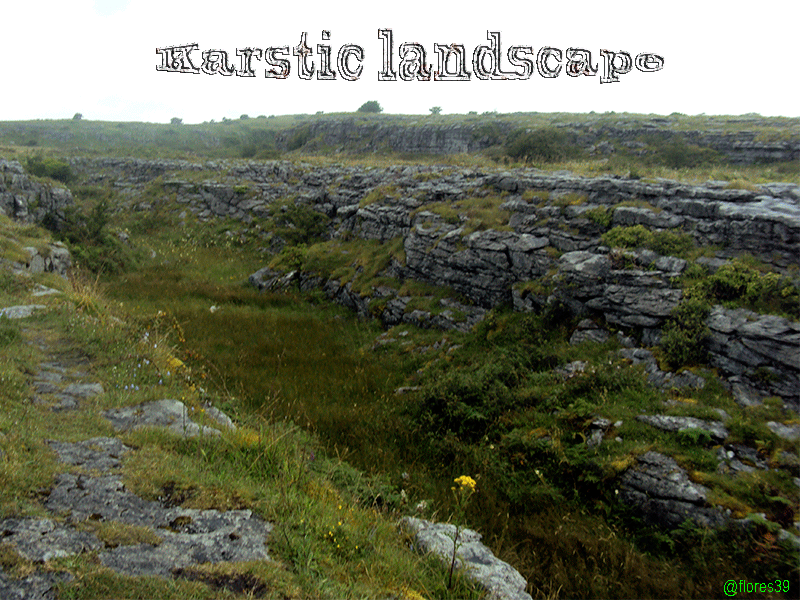
Approximately 300 km2 in the northwest of Clare County is characterized by karstic landscape, hence a portion of this area is protected with the figure of The Burren National Park. However, starting from the toponym of the park we can better understand what the karstic landscape consists of. Burren means stony area or with an extensive and superficial rocky base.
As a consequence, the rocky substrate, being naked and exposed to different environmental factors, the geological agents act diligently eroding, dissolving and collapsing the bedrock. Rain, sun, cold and temperature variation are combined with water with a high carbon dioxide (CO2) content that strikes through the small fissures and porosities of the limestone that is slightly permeable.
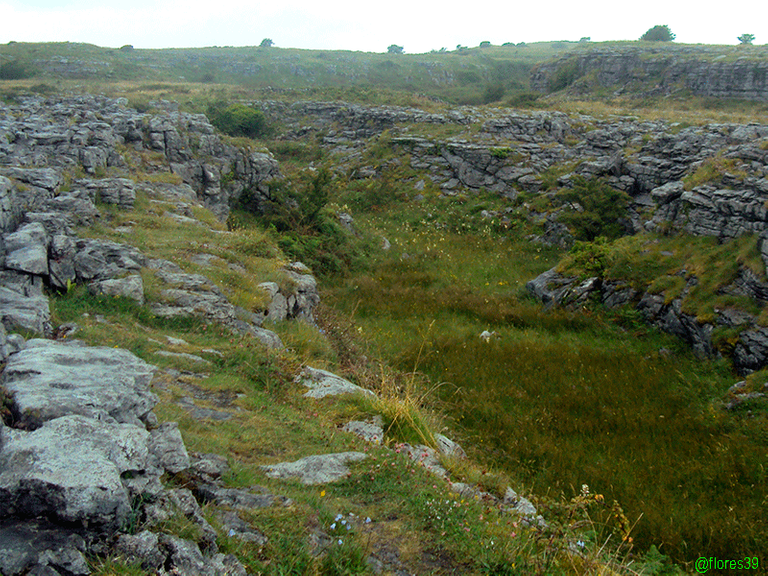
During the percolation process several chemical reactions occur because of the carbonates (CaCO3) sedimentary and the CO2 encapsulated inside the rock and soil orchestrate a competition where calcite or dolomite also participates and sulfates such as gypsum are finally dragged to give the karstic design of lapiaces, dolines and large caves in whose interior are formed sharp stalactites and stalagmites.

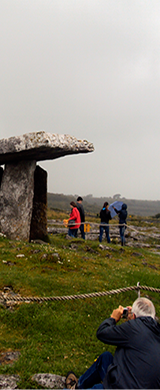
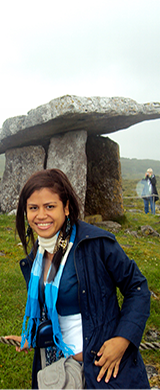
A dolmen is a megalithic structure in the form of a giant table whose design is based on anchoring to the ground several sheets of stone (orthostats) that act as columns and support one or more stone slabs in the form of a cover. Archaeologists based on radiocarbon tests determined that this Dolmen corresponds to the Neolithic historical period, between 3800 and 3200 years ago. Source

The Dolmen was built in a tumulus of little height with respect to the karstic plain; of course, thousands of years have passed since then, it is thought that it does not possess its primitive spatial dimensions because there was wear of the blocks and sinking of the ground. The orthostats show a clear unevenness that keeps the upper horizontal slab slightly inclined in a southwestern direction.
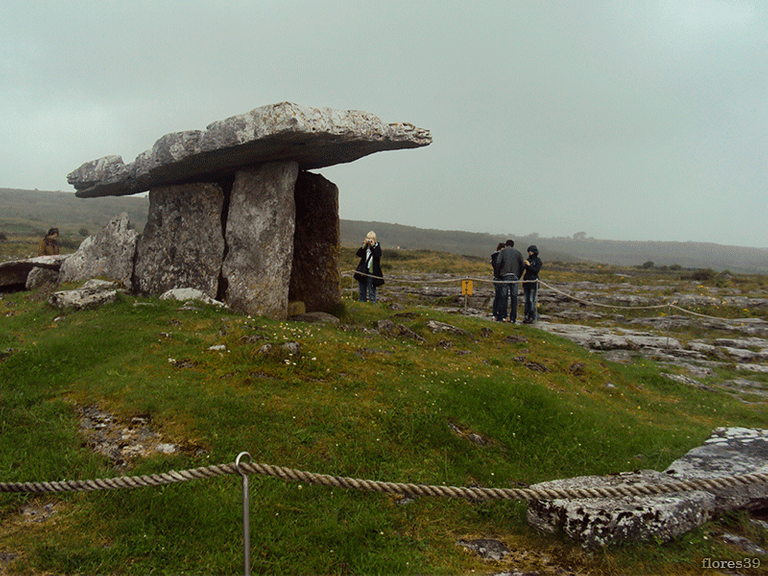
The orthostatic have an average height of 1.8 m while the upper slab of the roof is angular in shape and is 3 m long. In 1985 after cracking was observed in the stone block at the eastern entrance, Ann Lynch of the Irish National Monuments Service scheduled the restoration of the megalithic building and the following year work began under her direct supervision. Taking advantage of the removal of the orthostats and roof, excavations were instructed.

Excavation, restoration and replacement of orthostats were carried out between 1986 and 1988. Archaeologists found bones corresponding to 33 people between adults and children, when subjecting the samples to radiocarbon they were able to estimate the time in which they were buried ranges from 3800 to 3200 years a.e Next to the human remains there were certain domestic utensils and other archaic tools.
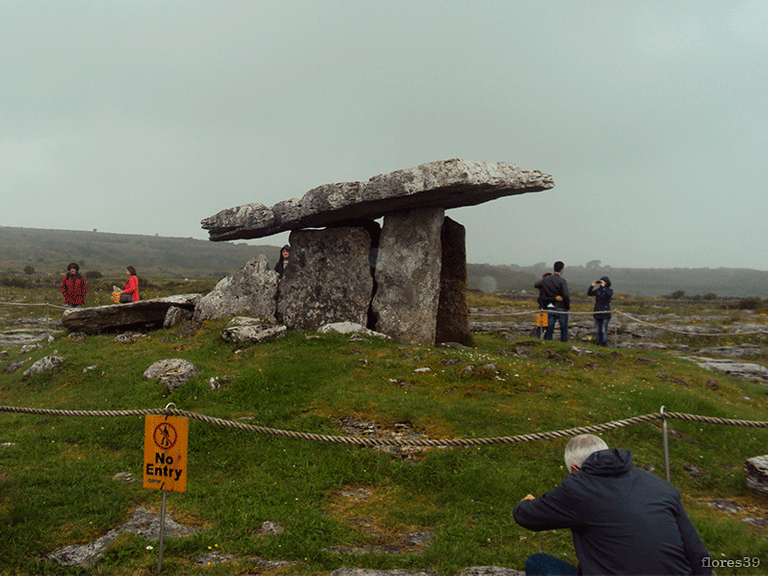
Another aspect that stands out is the arrangement of the bones, for which it is presumed that the corpses were dismembered, which implies making cuts and these would leave marks or incision marks, taking into account the types of tools based on stones and bones, it is most probable that several splinters and bone cracks occurred; however, no such signs of mistreatment were observed. Human remains and objects are under the care and protection of the Clare Museum in Ireland. Source

In a simple way it was possible to explain what a Barren is, how the karstic landscape was shaped during millions of geochemical processes; what is a Dolme and what was it used for during the primitive epoch?

The cracking of some of the orthostats of the Dolmen suited someone's purposes not only to restore the structure, but to initiate works and archeological excavations that provided elements and objects of prehistoric cultures with anthropological significant value; Getting open several hypotheses on habits and funerary style of this neolithic civilization, since until now it is not gone on and on understanding how the skeleton found itself relatively organized next to ceramics, precious stones, domestic objects and some primitive weapons.
The archeological education in this monument the suspended actually are; Nevertheless, the anthropological investigations obey your course to try giving answer to the hypotheses that happened.


Photographic equipment
✅[own images] |
* Brand: SONY. * Model: DSC-W180 X * Resolution: 2436 x 1125 pixels * Measuring mode: Design * Density: Very good (458ppi) * Velocity ISO: ISO 100 |
|---|

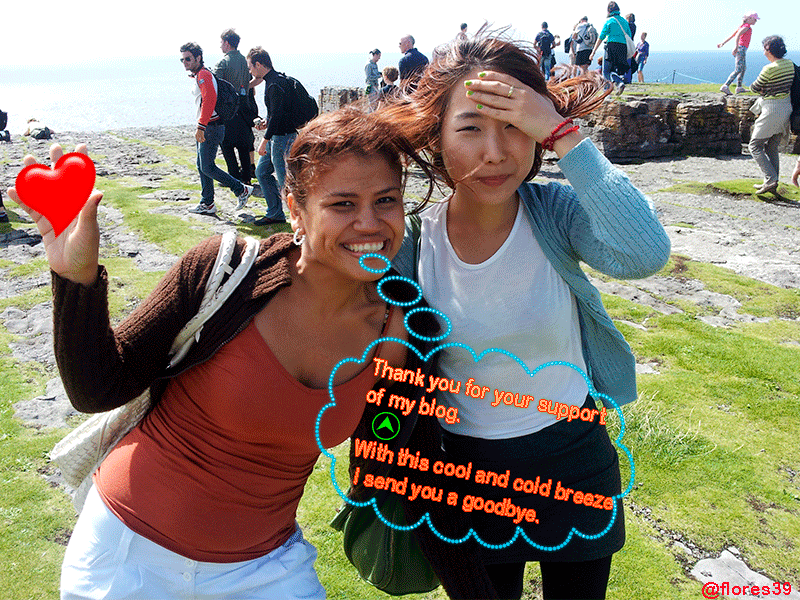
Congratulations @flores39! You have completed the following achievement on the Steem blockchain and have been rewarded with new badge(s) :
You can view your badges on your Steem Board and compare to others on the Steem Ranking
If you no longer want to receive notifications, reply to this comment with the word
STOPTo support your work, I also upvoted your post!
Vote for @Steemitboard as a witness to get one more award and increased upvotes!
Thank you for your support.
Feel free to support us back: vote for our witness.
You will get one more badge and more powerful upvotes from us on your posts with our next notifications.
partial upvote. We love your hard work and hope to encourage you to continue to publish strong travel-related content.
Thank you for being part of the TravelFeed community!Congratulations! Your high-quality travel content was selected by @travelfeed curator @mrprofessor and earned you a
Did you know that you get larger upvotes when posting through TravelFeed.io? That is not all, we are also giving away a ticket to Steemfest to one lucky TravelFeed user. Make sure to read the announcement and opt in! Also, thanks to the travel writing contest by @invisusmundi you can now earn up to 100 STEEM on top of the post rewards when posting through our new platform TravelFeed.io! Read the contest announcement for more information on how to participate.
We are continuously working on improving TravelFeed, recently we introduced EasySignUp and EasyLogin, our first step to make TravelFeed ready for mass adoption.
Learn more about TravelFeed by clicking on the banner above and join our community on Discord.
I very much appreciate your positive assessment.
Thank you for your support of my blog.
It's our pleasure!